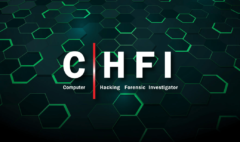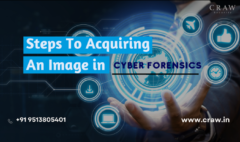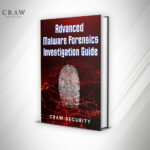Top 20 Cyber Forensics Interview Questions and Answers

Top 20 Cyber Forensics Interview Questions and Answers
We are in a world where we are significantly witnessing varied cyberattacks on several websites and diverse IT infrastructures. However, we need to track down the real culprits behind bars who channel these cyberattacks and steal our highly crucial and sensitive datasets from our digital assets.
In this regard, many law enforcement agencies require numerous duly certified cyber forensics investigators to run their daily official operations and find out real cybercriminals.
Your Future Starts Here – Reserve Your FREE Demo Class Now!
![]()
On the other hand, Craw Security, the best cyber forensics training provider in India, offers this highly researched set of Top 20 Cyber Forensics Interview Questions and Answers that interviewers frequently ask during many interview sessions.
Here are the Top 20 Cyber Forensics Interview Questions and Answers written below:
Cyber Forensics Interview Questions and Answers
1: What is cyber forensics?
The activity of obtaining, preserving, and analyzing information collected from digital devices, networks, and systems to be used as evidence in court or to help resolve a security incident is known as cyber forensics. It is a subfield of forensic science that is employed to locate, safeguard, examine, and exhibit digital evidence in a manner that is compatible with legal admissibility.
2: What are the different types of cyber forensics?
The different types of cyber forensics are as follows:
- Network Forensics
- Mobile Forensics
- Database Forensics
- Malware Forensics
- Cloud Forensics
- Email Forensics
- Forensic Image Analysis
- File System Forensics
- Memory Forensics
- Social Media Forensics
3: What is the difference between cyber forensics and digital forensics?
Digital evidence from cybercrime, like harmful software, computer viruses, and cyberbullying, is the focus of cyber forensics. On the contrary, the recovery and analysis of digital evidence from any form of digital devices, including computers, phones, tablets, and digital cameras, is the focus of digital forensics. Cyber forensics is employed in cases involving fraud, intellectual property theft, and other cyber security concerns, whereas digital forensics is frequently used throughout criminal investigations.
4: What is the process of conducting a cyber forensic investigation?
The process of conducting a cyber forensic investigation is as follows:
- Define the Scope and Objectives
- Identify and Preserve the Evidence
- Analyze the Evidence
- Document Findings
- Present Findings
5: What are the key components of a cyber forensic lab?
The mainstream key components of a cyber forensic lab are as follows:
- Computer Systems
- Storage Media
- Networking Equipment
- Forensic Software
- Documentation and Evidence Management
- Imaging Equipment
- Training and Education
6: What is the importance of preserving digital evidence?
Digital evidence needs to be preserved for a number of explanations. It can offer concrete evidence of criminal activity or other illegal behavior, serve as proof in court, and enable the prosecution of individuals who committed the crime. Furthermore, keeping track of digital evidence might aid in finding those who have been the victims of internet scams, cyberbullying, or other types of digital abuse. Lastly, digital evidence can assist organizations in defending themselves against future legal concerns or responsibilities.
7: What are the common types of cybercrime?
The common types of cybercrimes are as follows:
- Identity Theft
- Hacking
- Malware
- Phishing
- Spam
- Cyberbullying
- Denial-of-service attack
- Intellectual property theft
8: What is the role of a cyber forensic investigator?
A cyber forensic investigator is in charge of looking through digital proof of crimes using computers and networks. To locate, gather, and examine digital evidence, they employ a range of strategies and instruments. They could also offer professional testimony in court. To adequately examine and analyze digital evidence, cyber forensics investigators need to be technically and legally knowledgeable.
9: What are the different techniques used in cyber forensic investigations?
The different techniques used in cyber forensic investigations are as follows:
- Data Acquisition & Preservation
- Analysis & Correlation
- Network Forensics
- Malware Analysis
- Mobile Device Forensics
- Cloud Forensics
- Email Forensics
- Memory Forensics
10: What is data acquisition in cyber forensics?
The practice of gathering digital evidence from a system or any other digital device to be utilized in a criminal probe is known as data acquisition in the field of cyber forensics. Files, emails, internet history, and data from other sources are all collected and preserved during this procedure by computers. The information gathered through this approach is then scrutinized to find proof of cybercrime or another digital incident.
11: What is data analysis in cyber forensics?
Data analysis is the procedure of gathering, examining, and deciphering digital evidence in cyber forensics in order to recognize and record the operations of cyber criminals. It is employed to spot illegal activity, including malware infections, data breaches, and cyberattacks, as well as to track down the attack’s origin and find the perpetrator. Digital forensics, computer forensics, network forensics, and malware analysis are some of the data analysis methods utilized in cyber forensics.
12: What is data recovery in cyber forensics?
The procedure of retrieving data from systems, networks, and other digital sources is known as data recovery in the field of cyber forensics. Information that has been destroyed, damaged, or erased must be recovered using specific tools and methods. Cyber forensics experts employ a range of techniques to make sure the data is recovered in a way that will be beneficial during court procedures. This involves using digital imaging to gather electronic evidence, look through deleted files, and retrieve emails that have been wiped.
13: What is data preservation in cyber forensics?
The practice of maintaining digital evidence in its native form to confirm its integrity to be utilized in an inquiry or legal proceedings is known as data preservation in cyber forensics. This entails creating a copy of the evidence, keeping it in a safe place, and making sure it hasn’t been altered or tampered with in any way. Data preservation is crucial to the digital forensics process and can assist in guaranteeing the validity and accuracy of the evidence.
14: What are the tools and technologies used in cyber forensics?
The primetime tools and technologies used in cyber forensics are as follows:
- EnCase
- FTK (Forensic Toolkit)
- Helix3 Pro
- Autopsy
- X-Ways Forensics
- Volatility
- Cellebrite
- Wireshark
- KAPE
- OSForensics
15: How do you handle and analyze mobile device data in a cyber forensic investigation?
B adapting the following steps, I can simply handle and analyze mobile device data in a cyber forensic investigation:
- Collecting the Data
- Analyzing the Data
- Analyzing the Evidence
- Presenting the Results
16: How do you handle and analyze cloud data in a cyber forensic investigation?
I can easily handle and analyze cloud data in a cyber forensic investigation by following the below-mentioned steps:
- Identify the source of the cloud data
- Collect the cloud data
- Analyze the data
- Prepare a written report
17: How do you handle and analyze network data in a cyber forensic investigation?
With the usage of the below-mentioned approach, I can nicely handle and analyze network data in a cyber forensic investigation:
- Collect Network Data
- Analyze Network Traffic
- Correlate Network Data
- Report Findings
- Document Everything for the Recordkeeping
18: How do you handle and analyze social media data in a cyber forensic investigation?
I can sincerely handle and analyze social media data in a cyber forensic investigation with the below-mentioned procedure:
- Identify the type of social media platform
- Collect the data
- Analyze the data
- Document the findings
19: How do you communicate and present your findings in a cyber forensic investigation?
With the following methodology, I can nicely communicate and present the findings in a cyber forensic investigation:
- Prepare a detailed investigative report
- Present the report in a clear and concise manner
- Prepare a slide deck
- Share the findings with key stakeholders
20: How do you stay updated on the latest trends and techniques in cyber forensics?
By bringing the following changes in myself, I can nicely stay updated on the latest trends and techniques in cyber forensics:
- Attend conferences and seminars
- Read industry publications
- Participate in online forums
Follow experts on social media
















